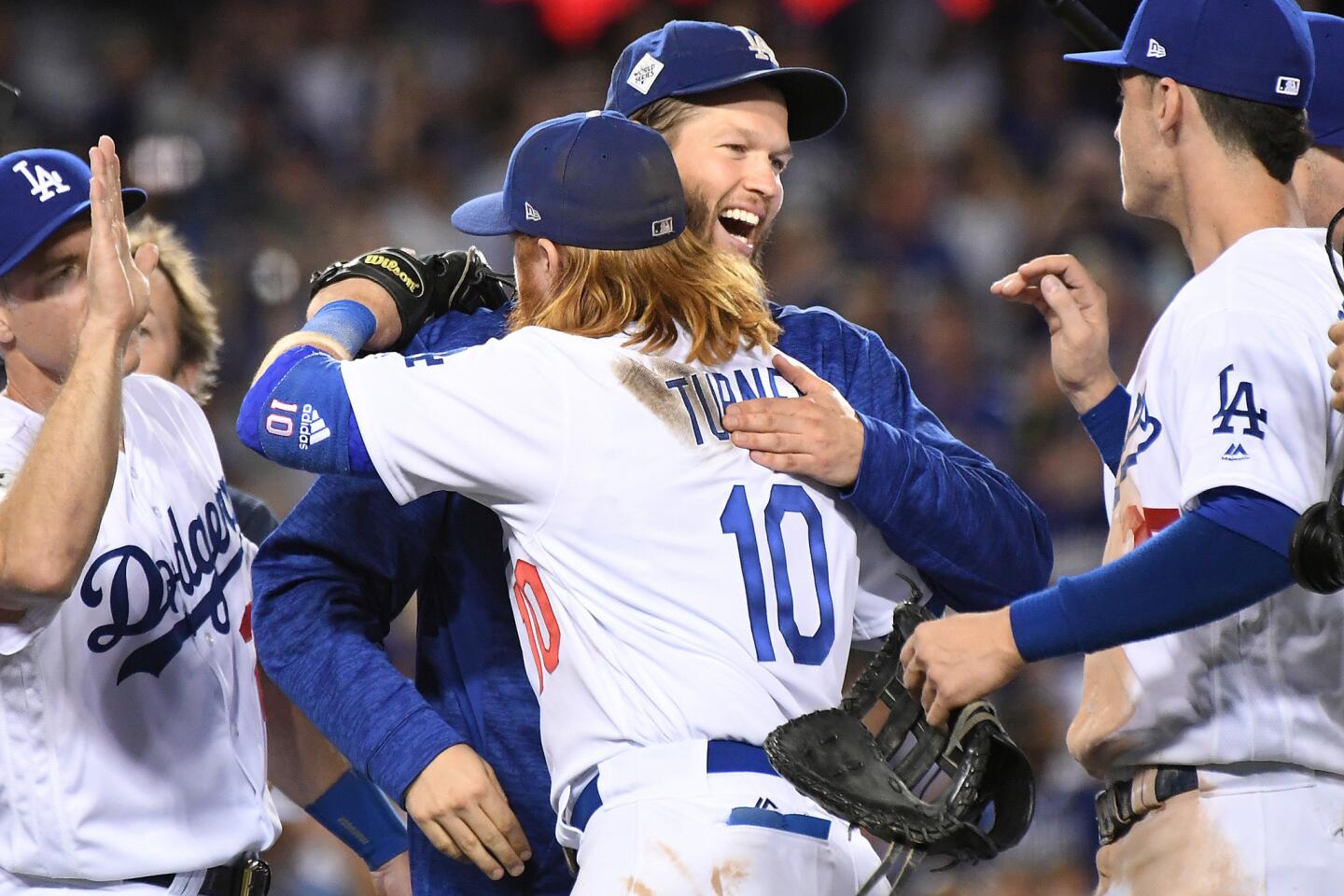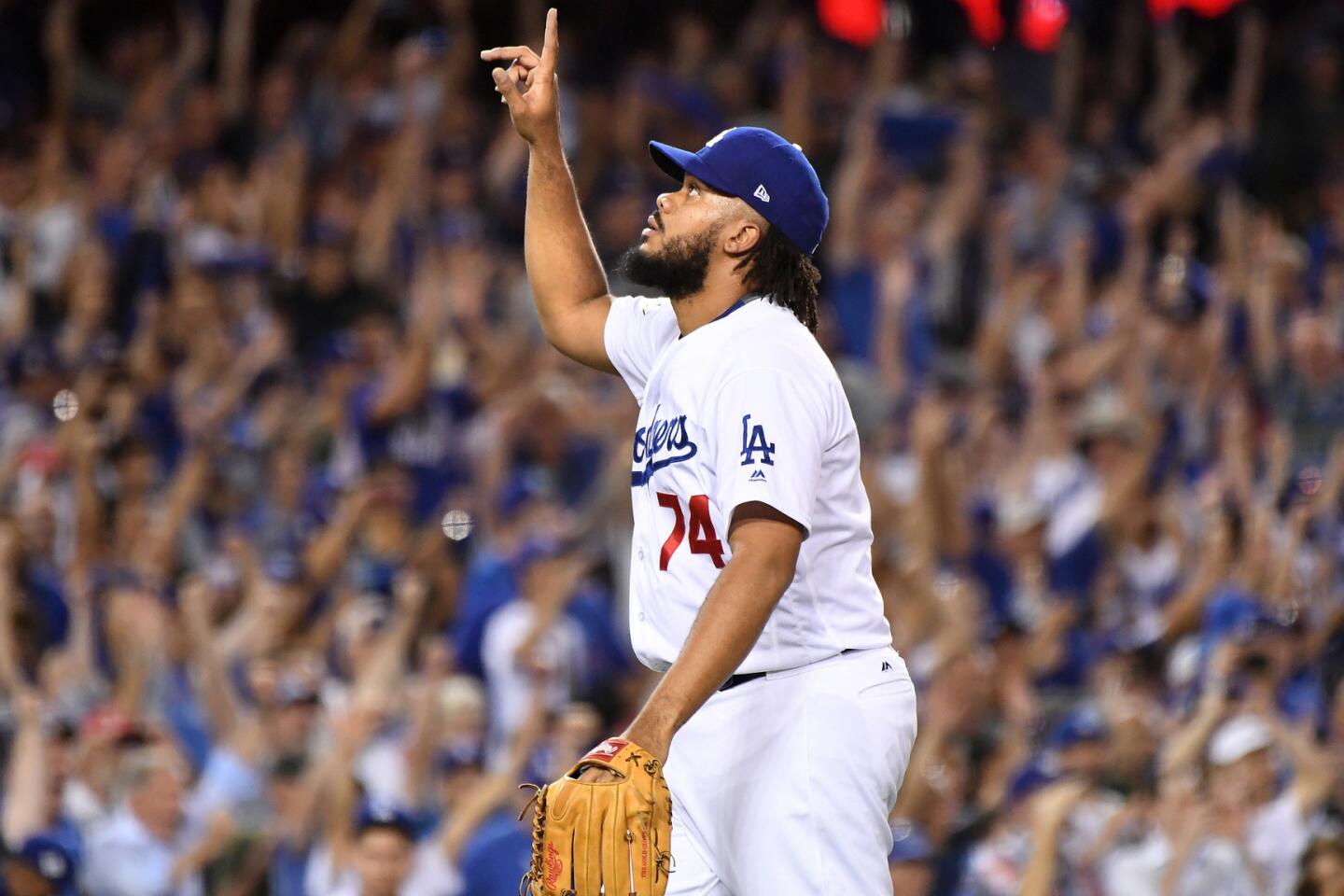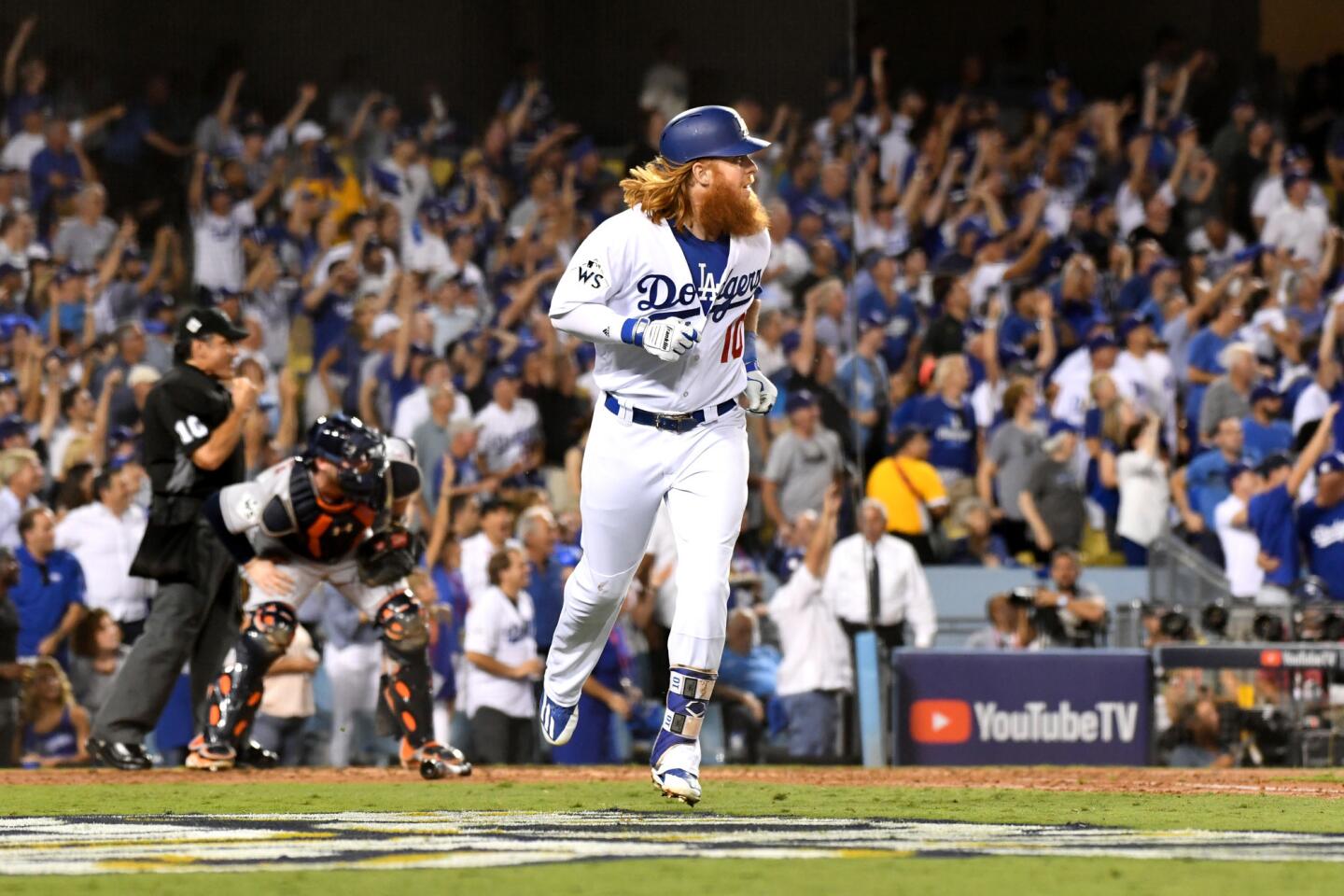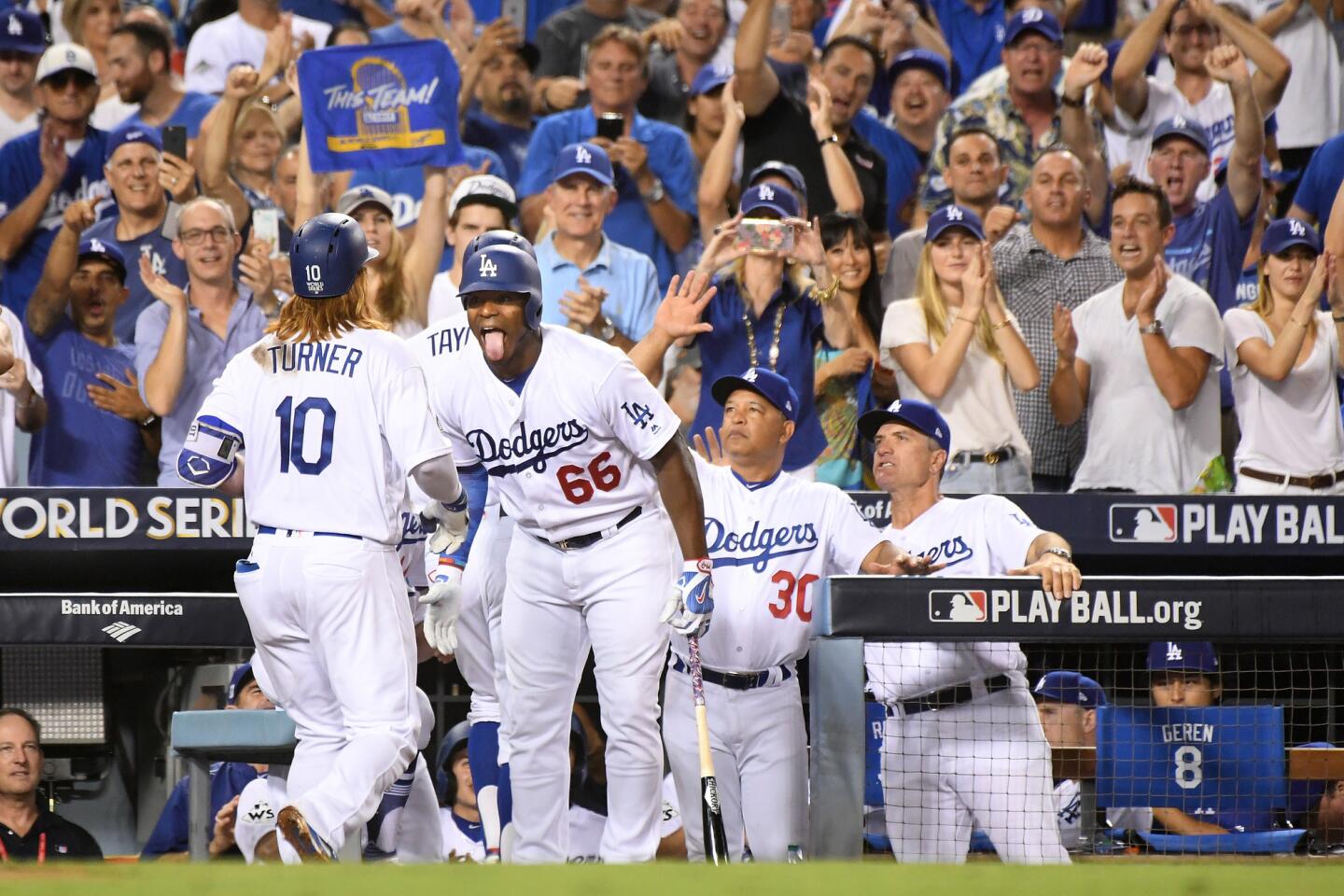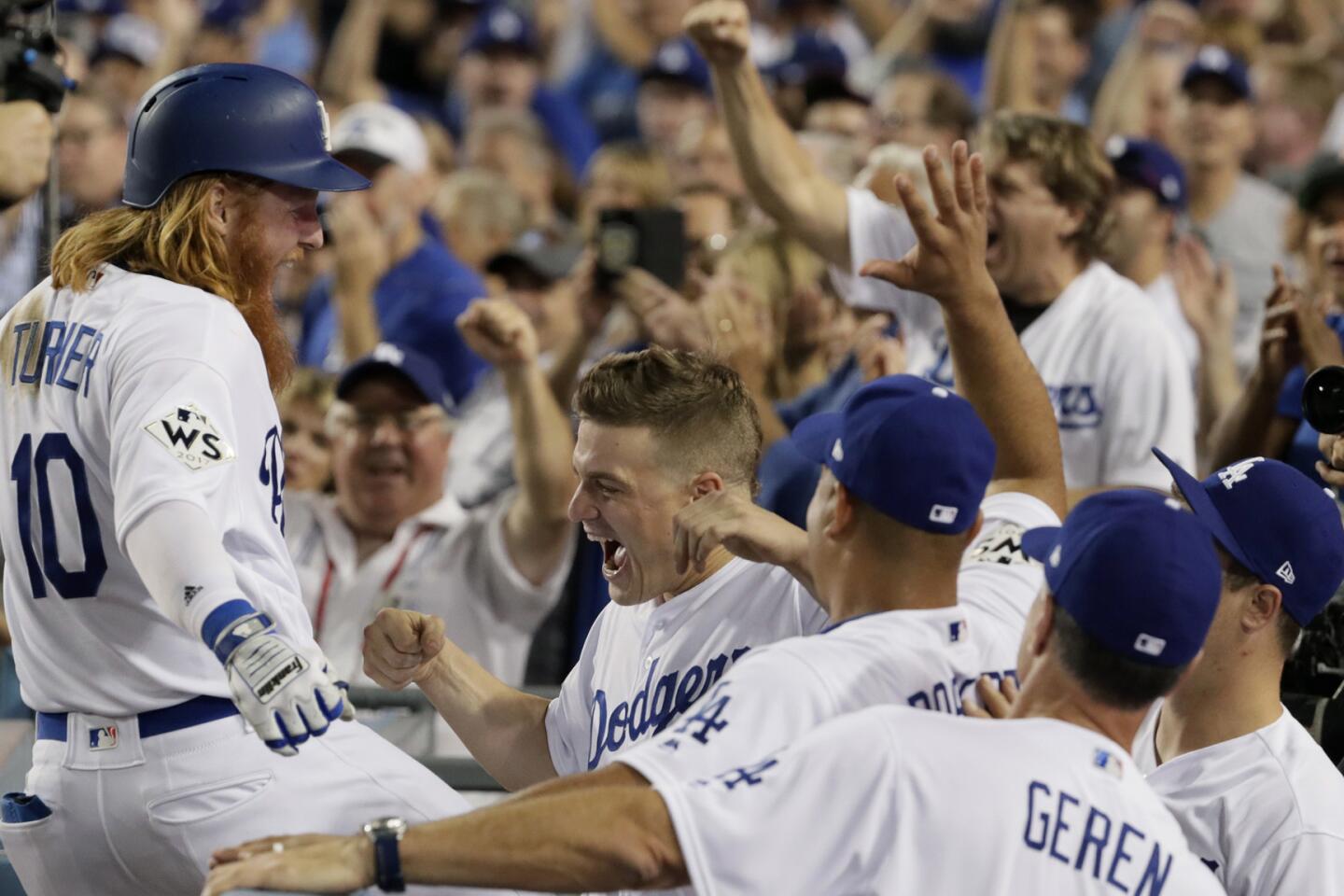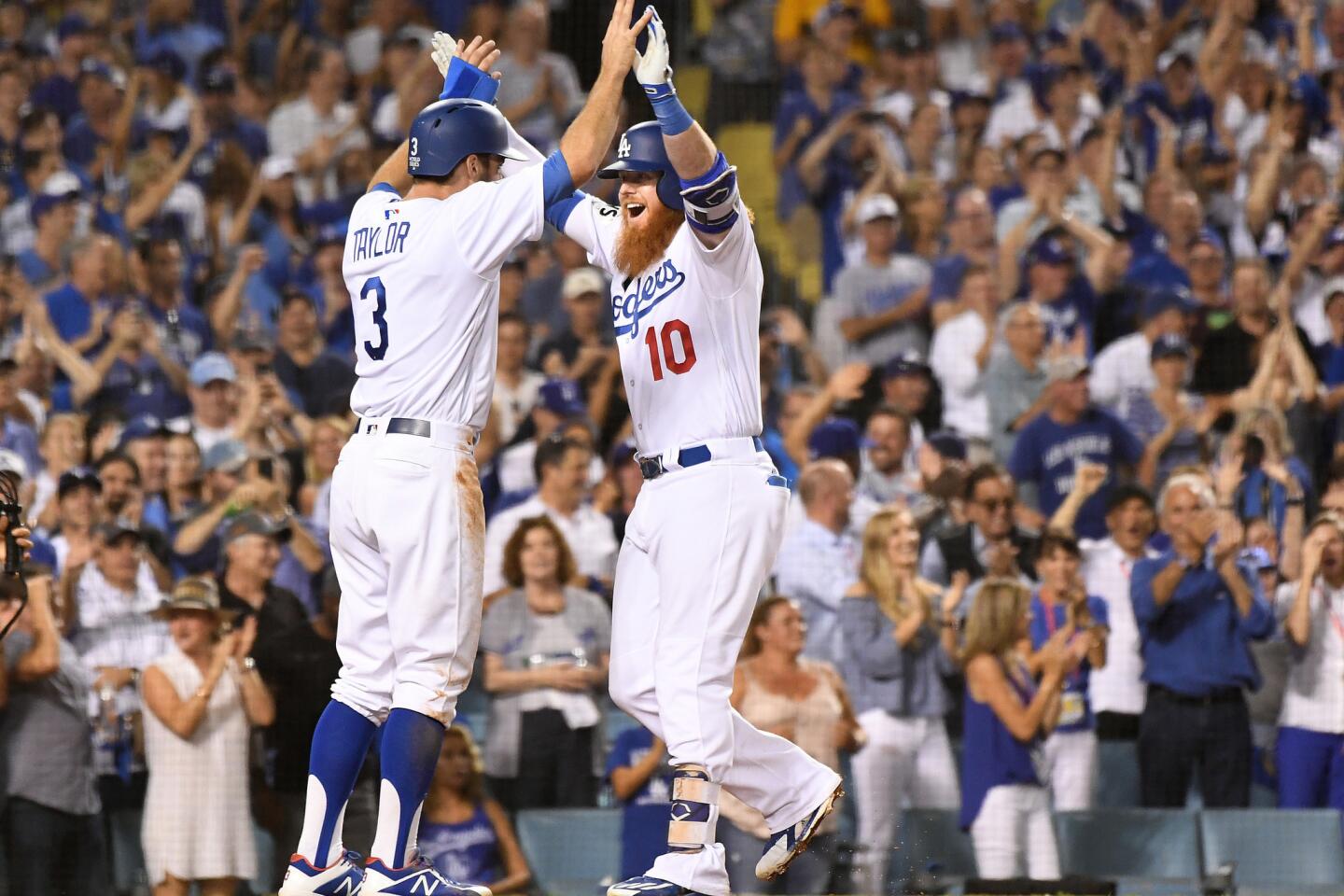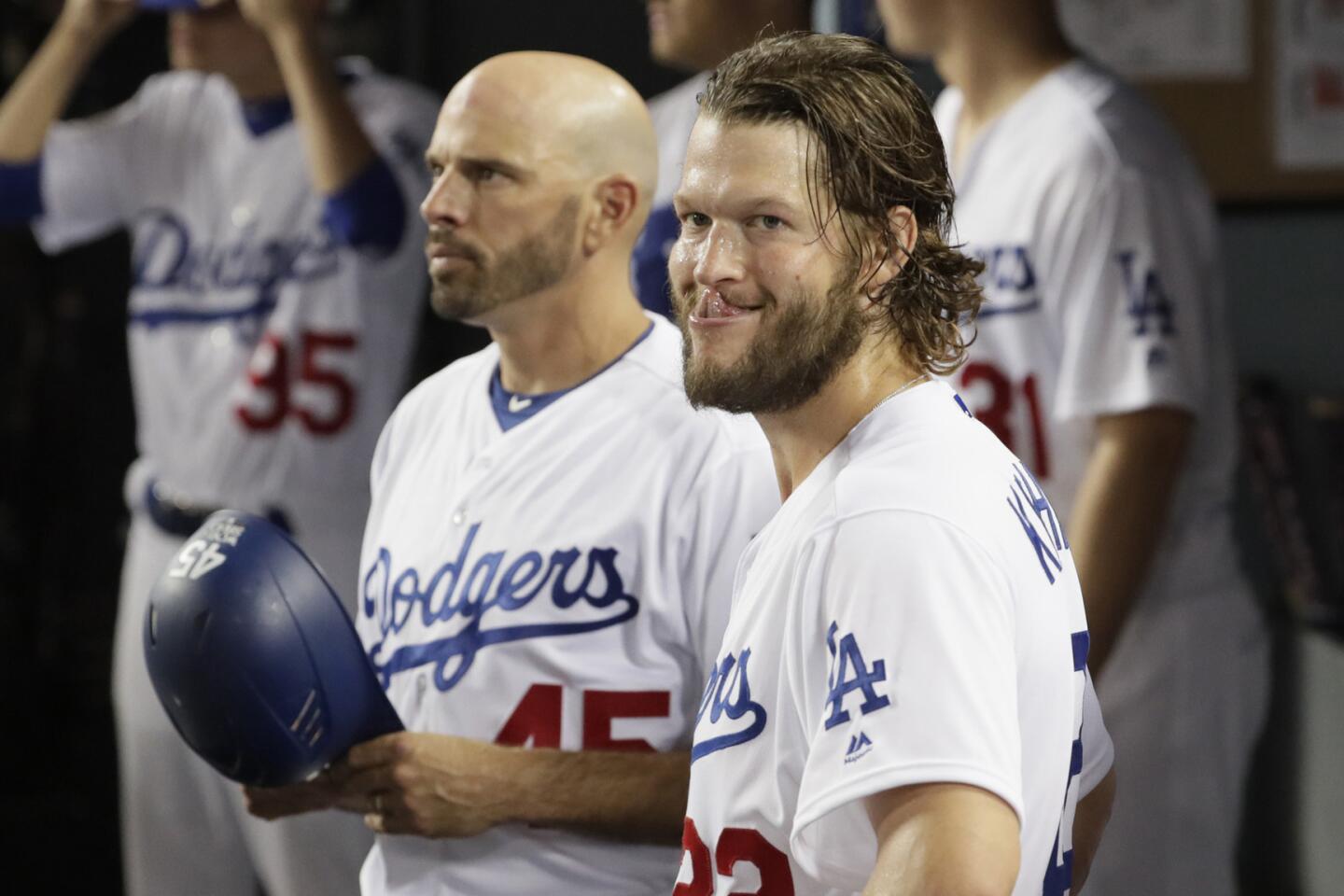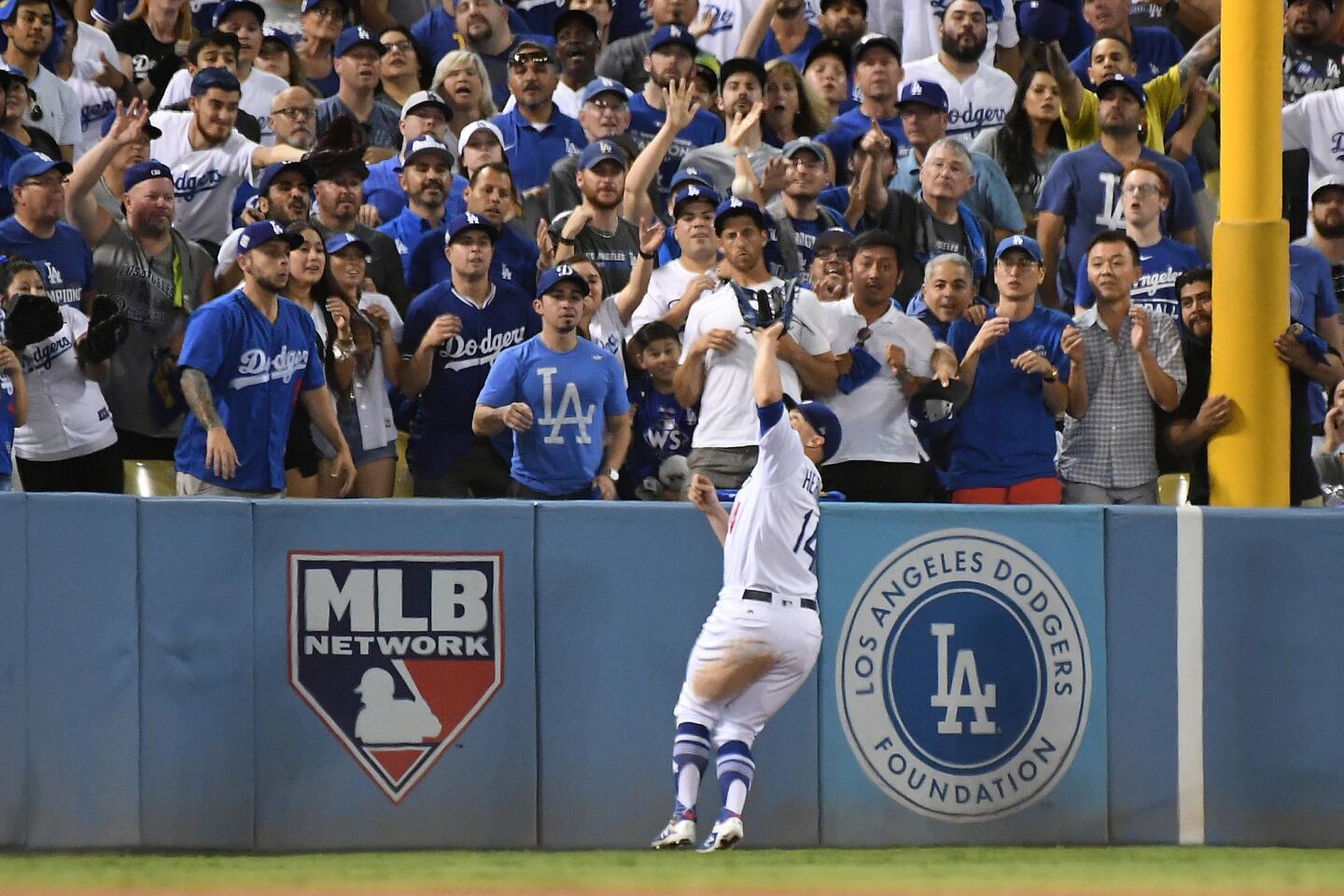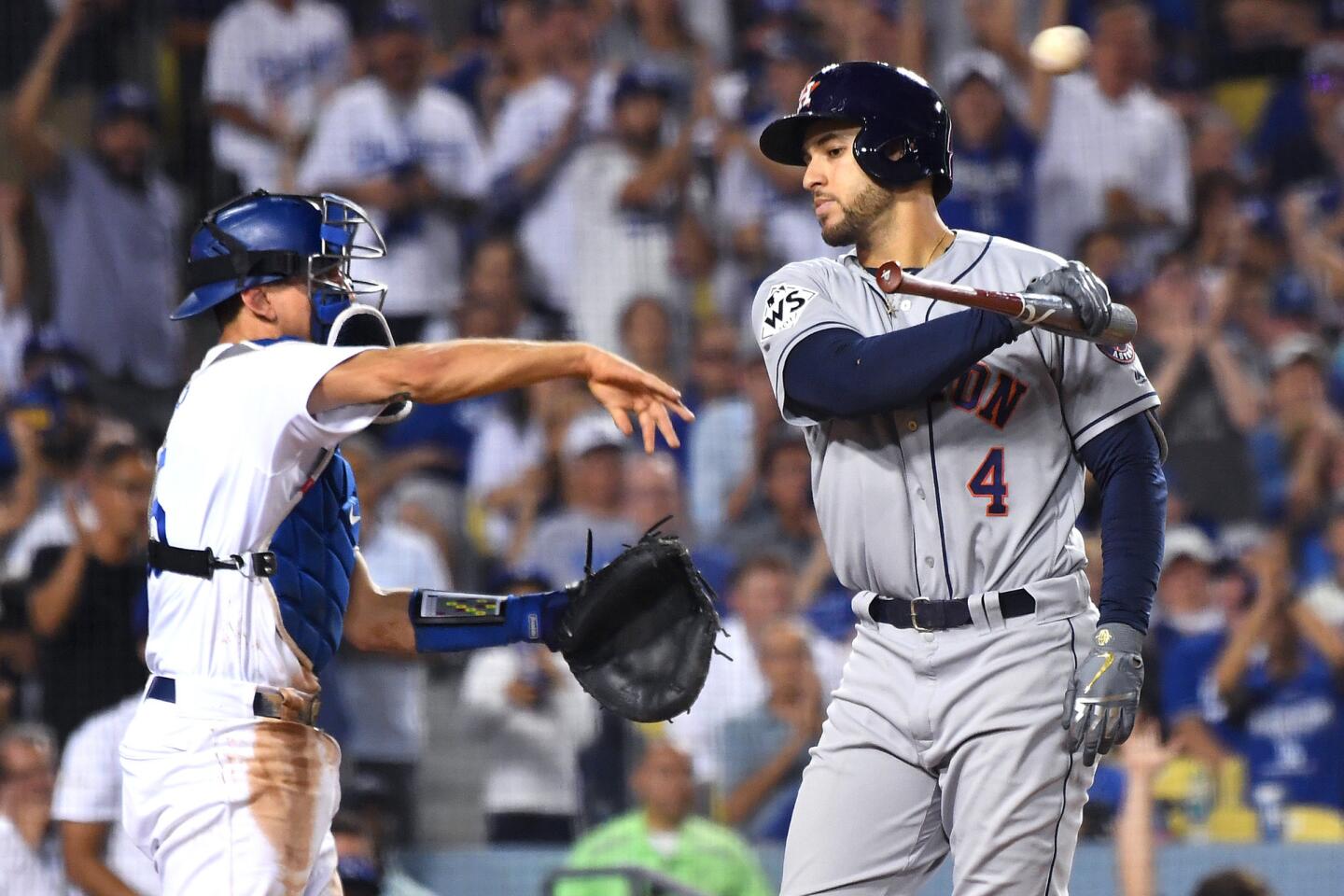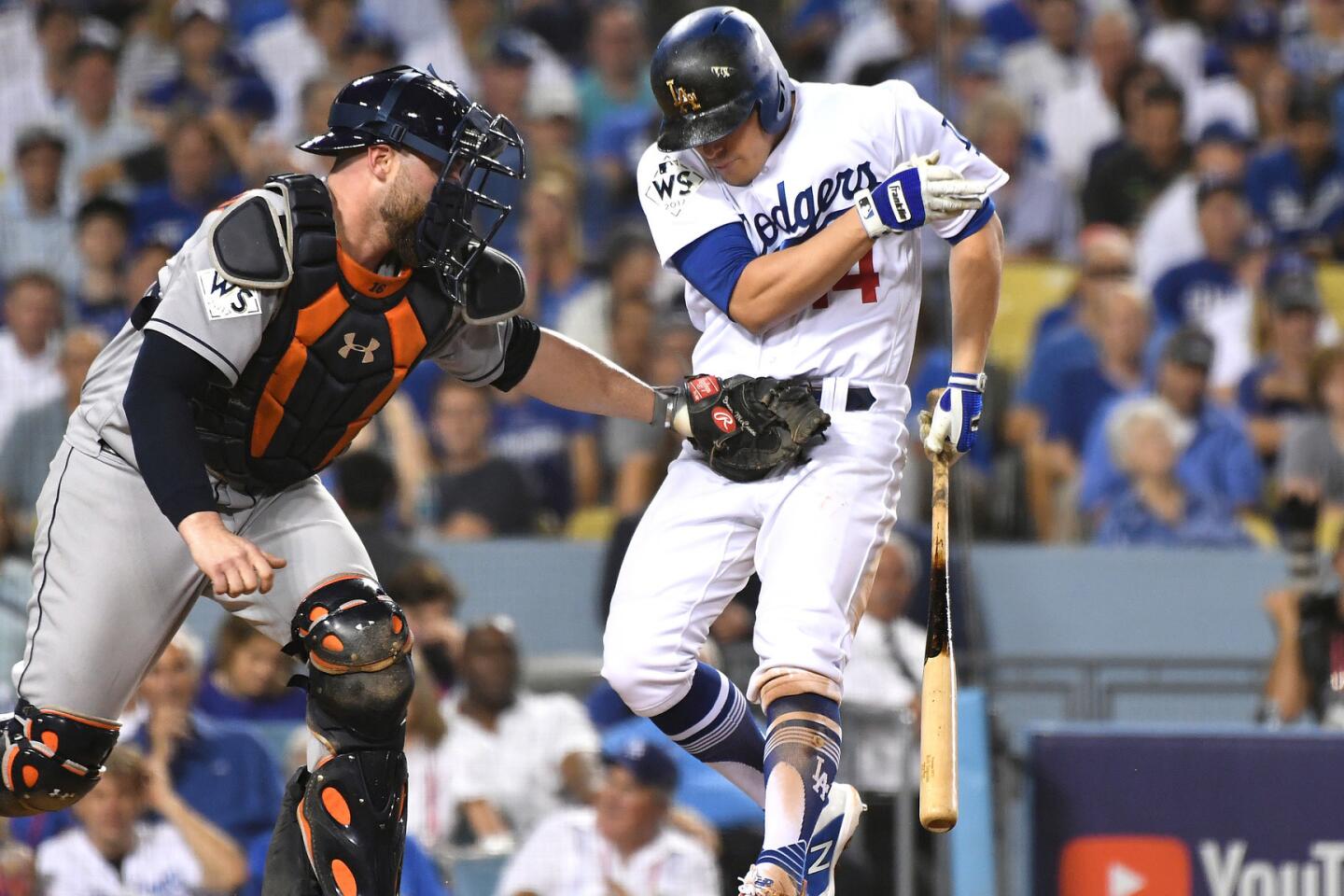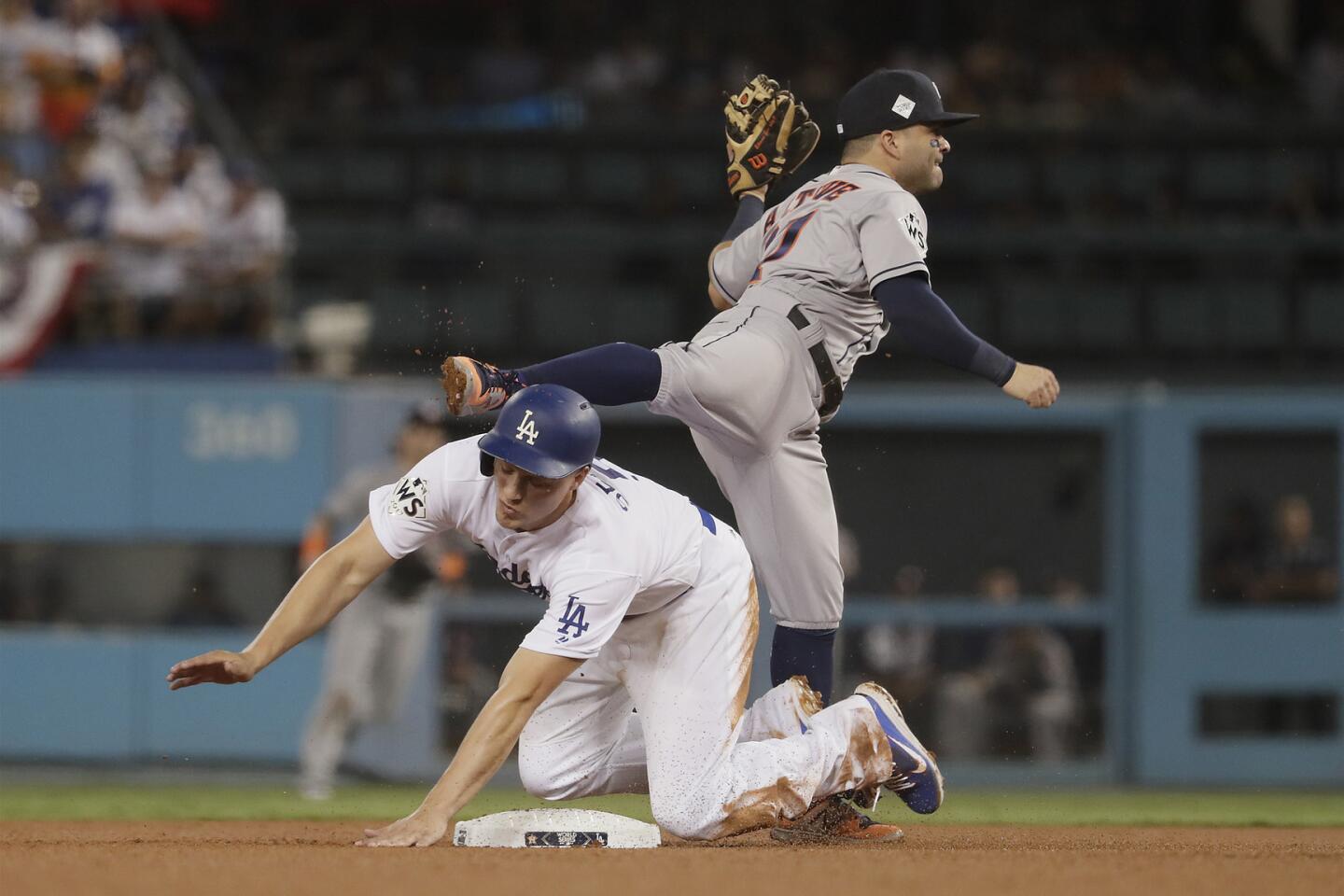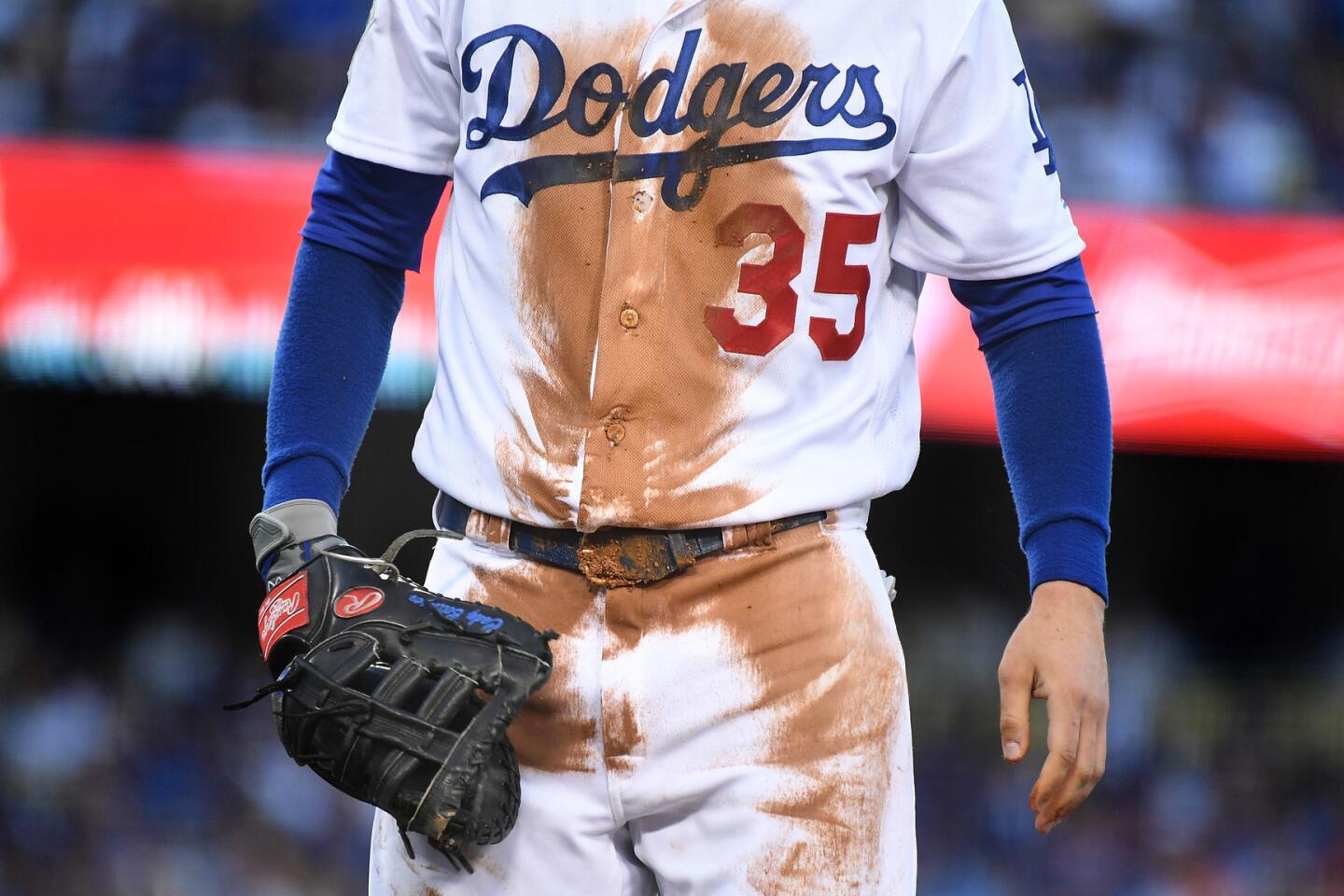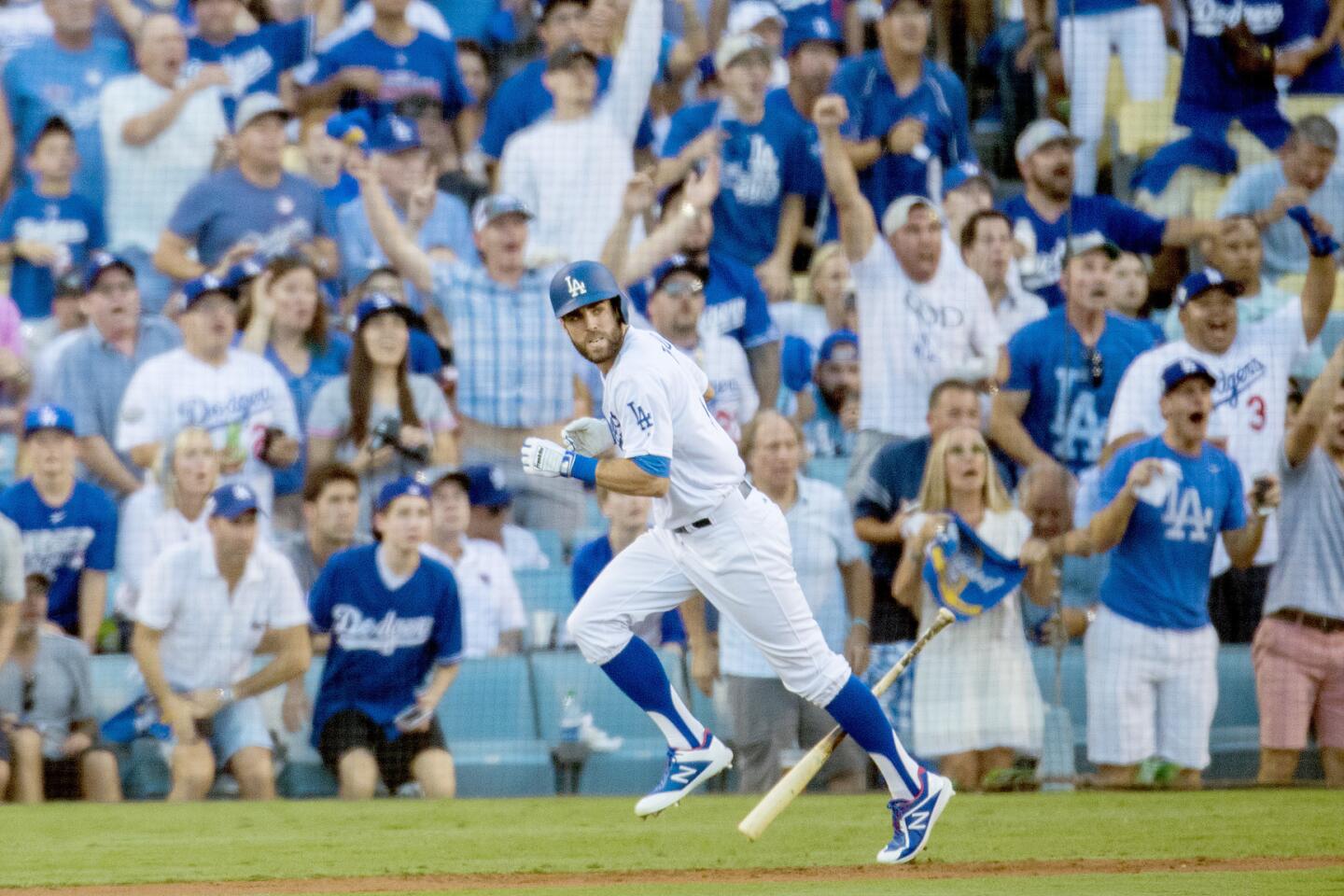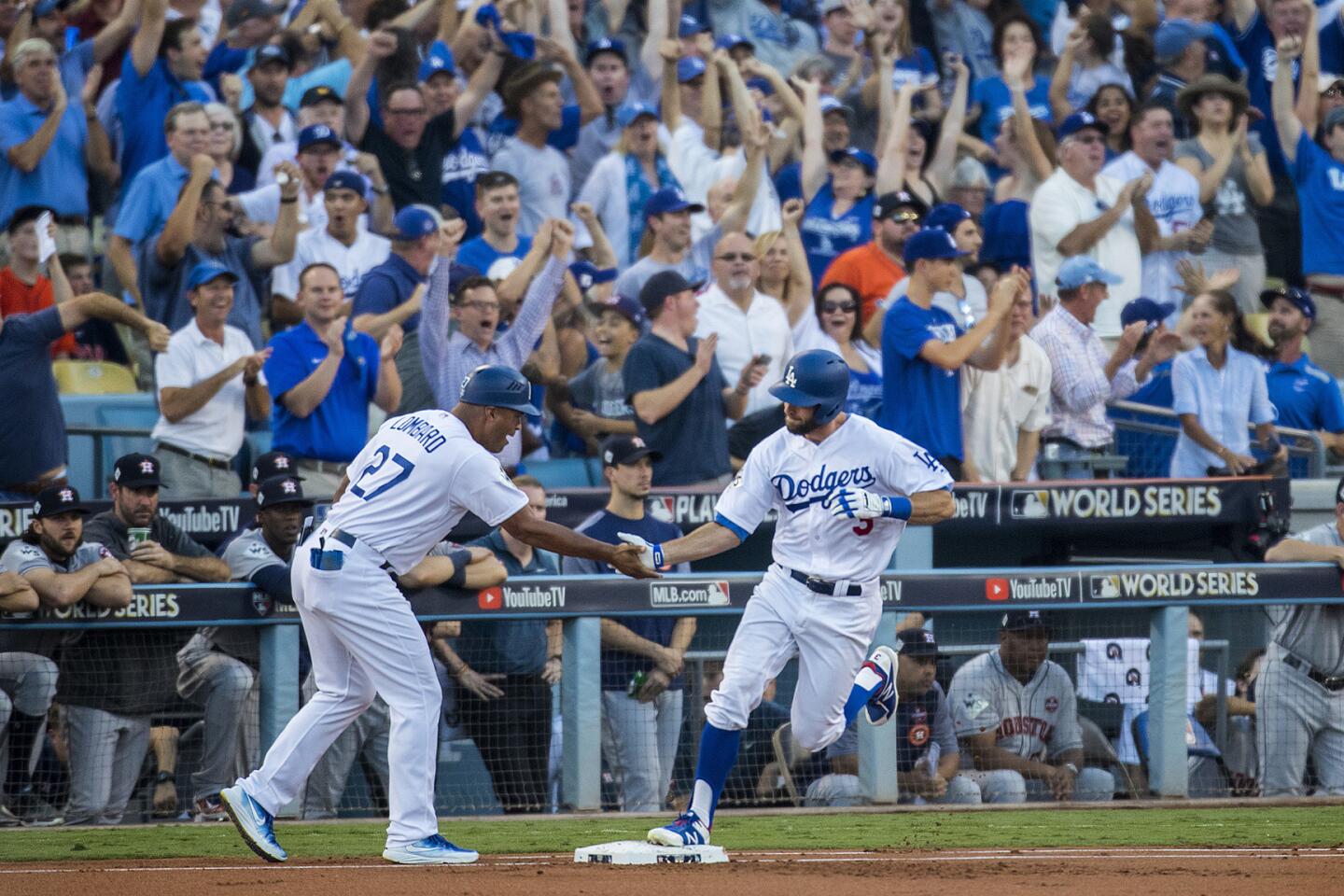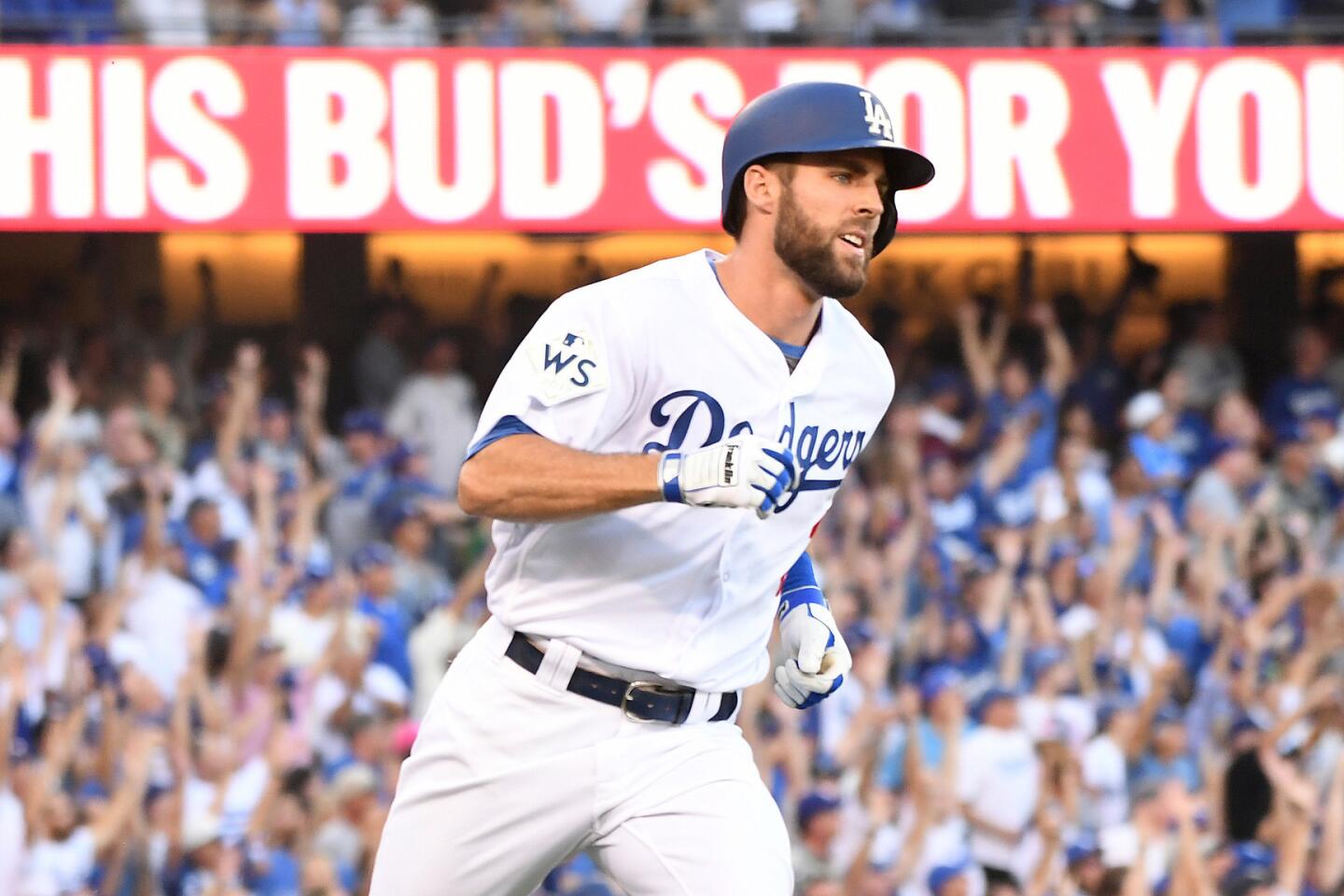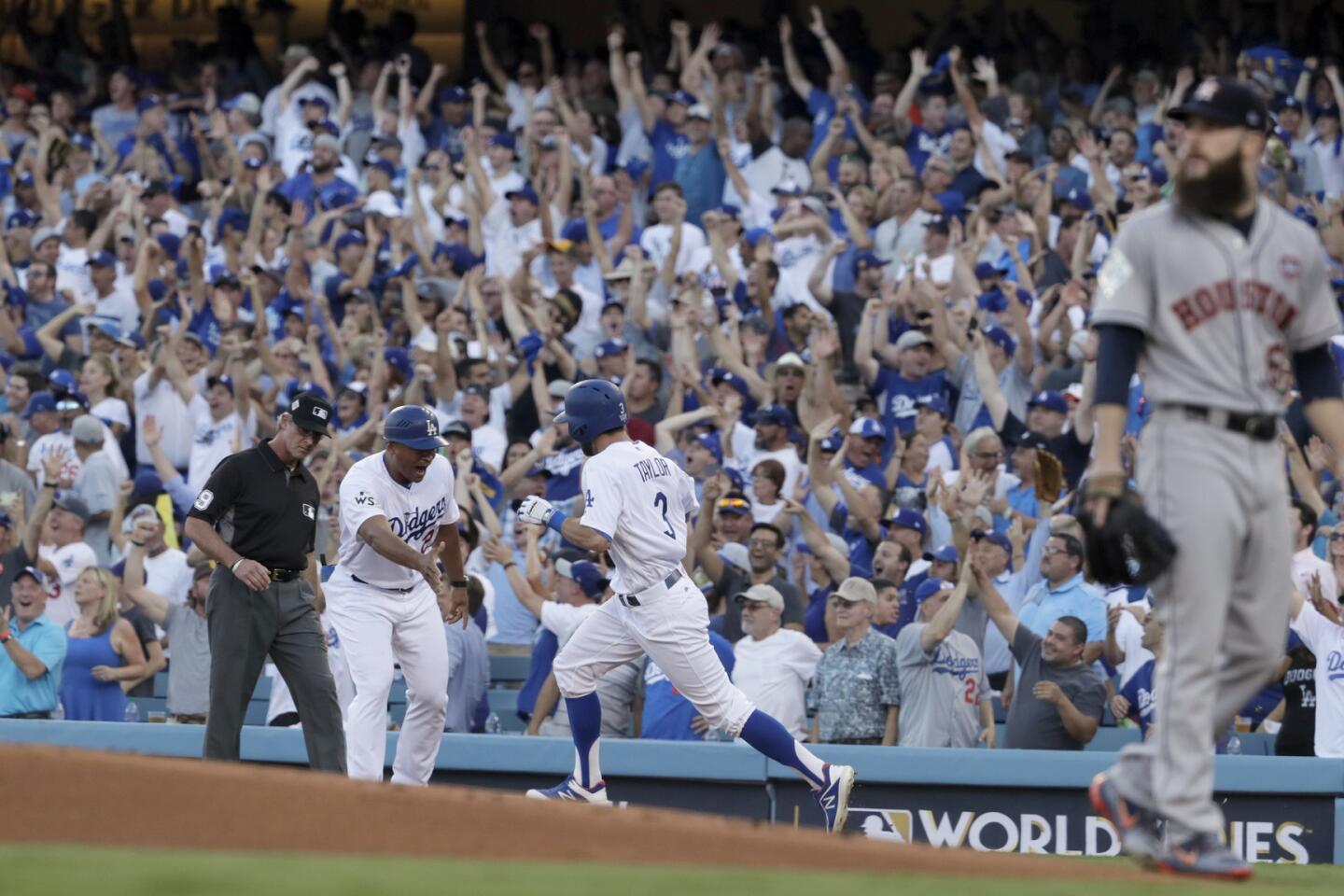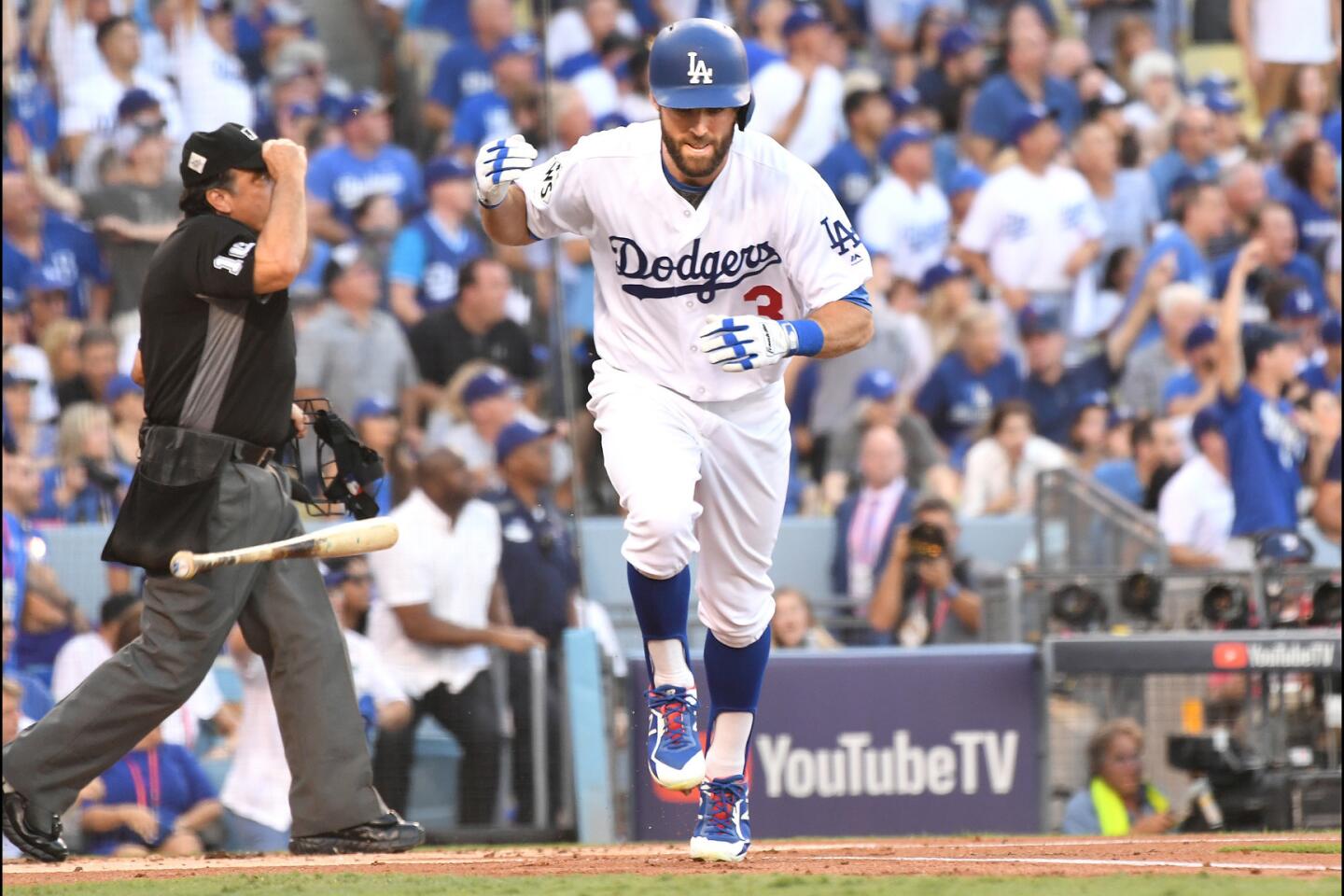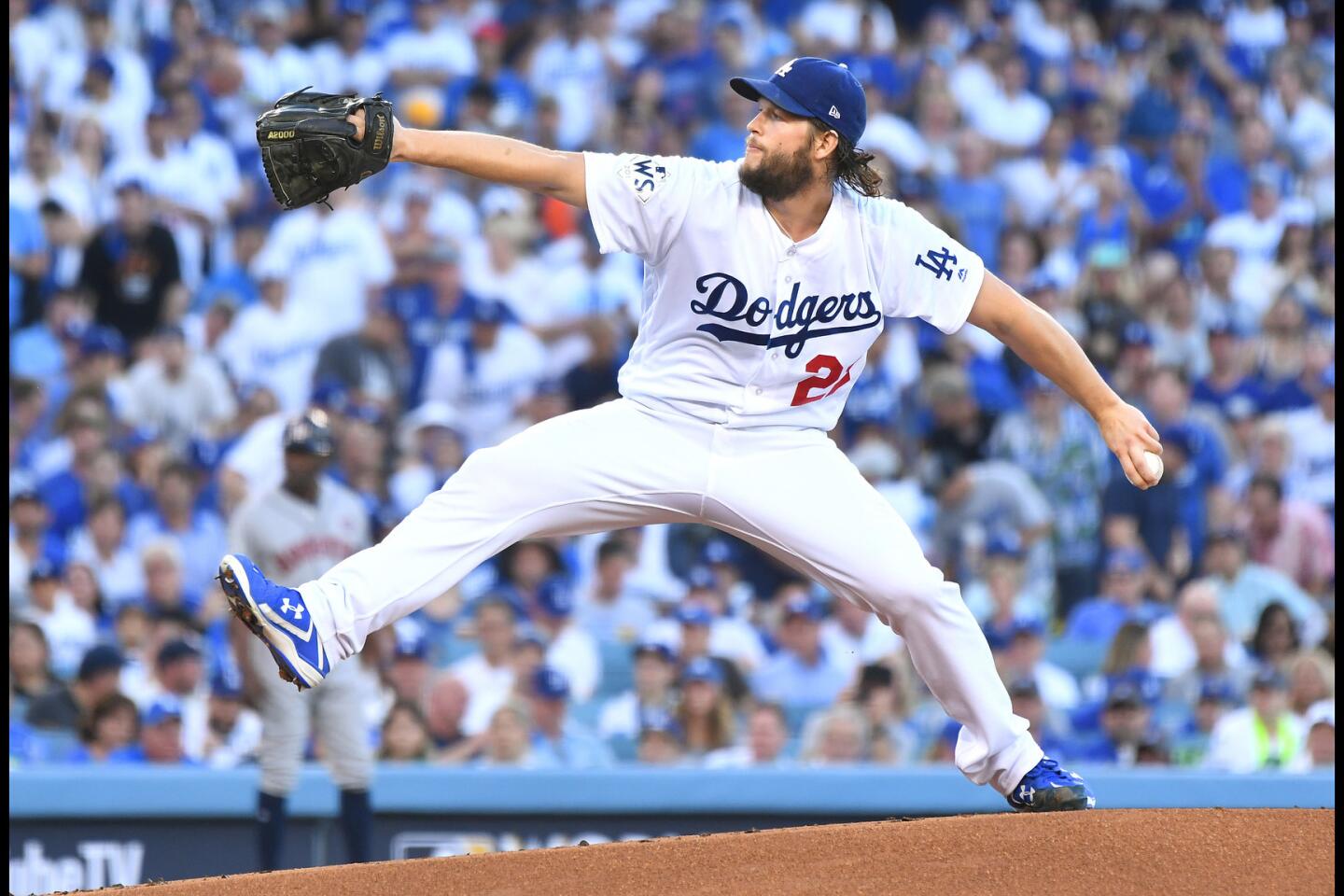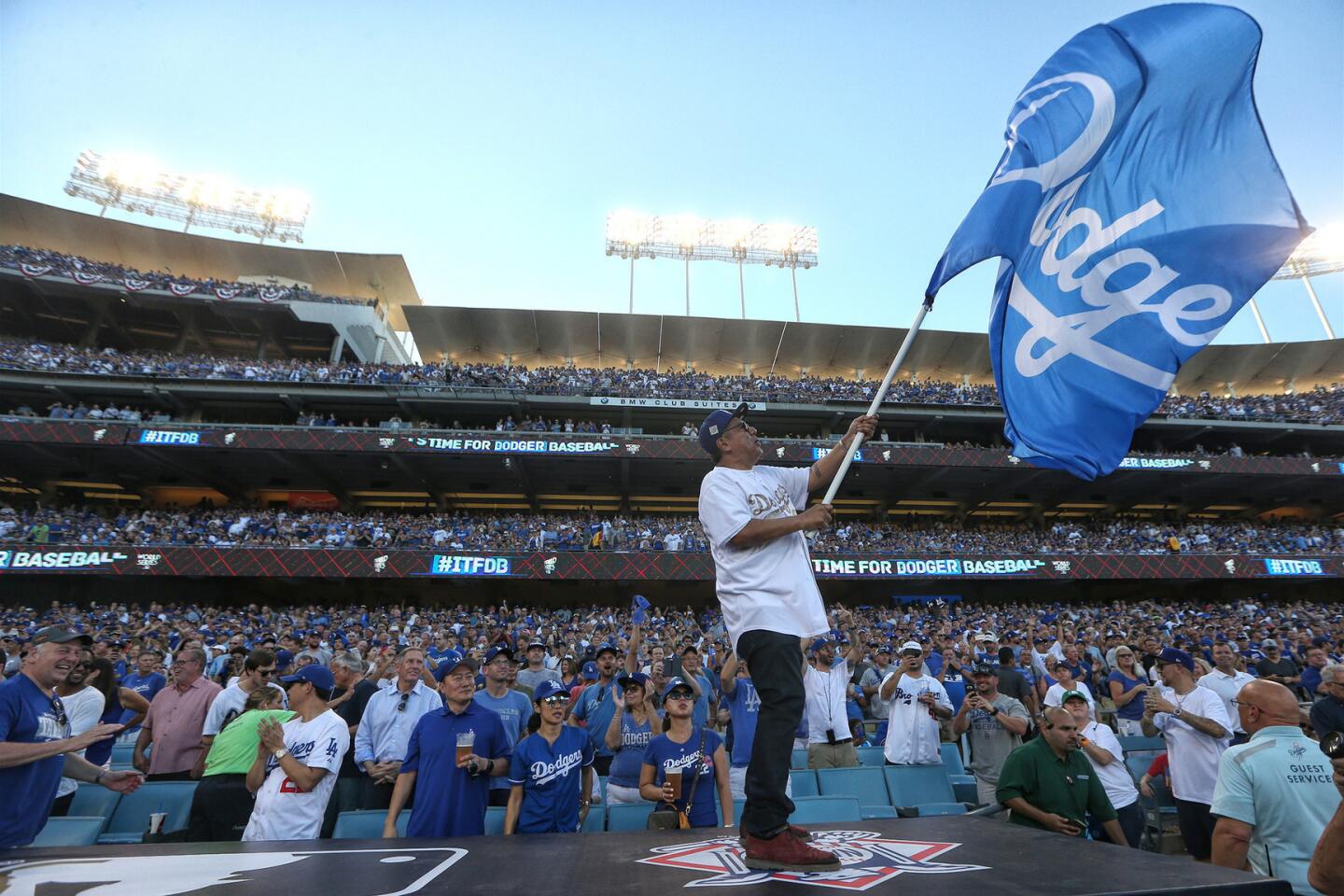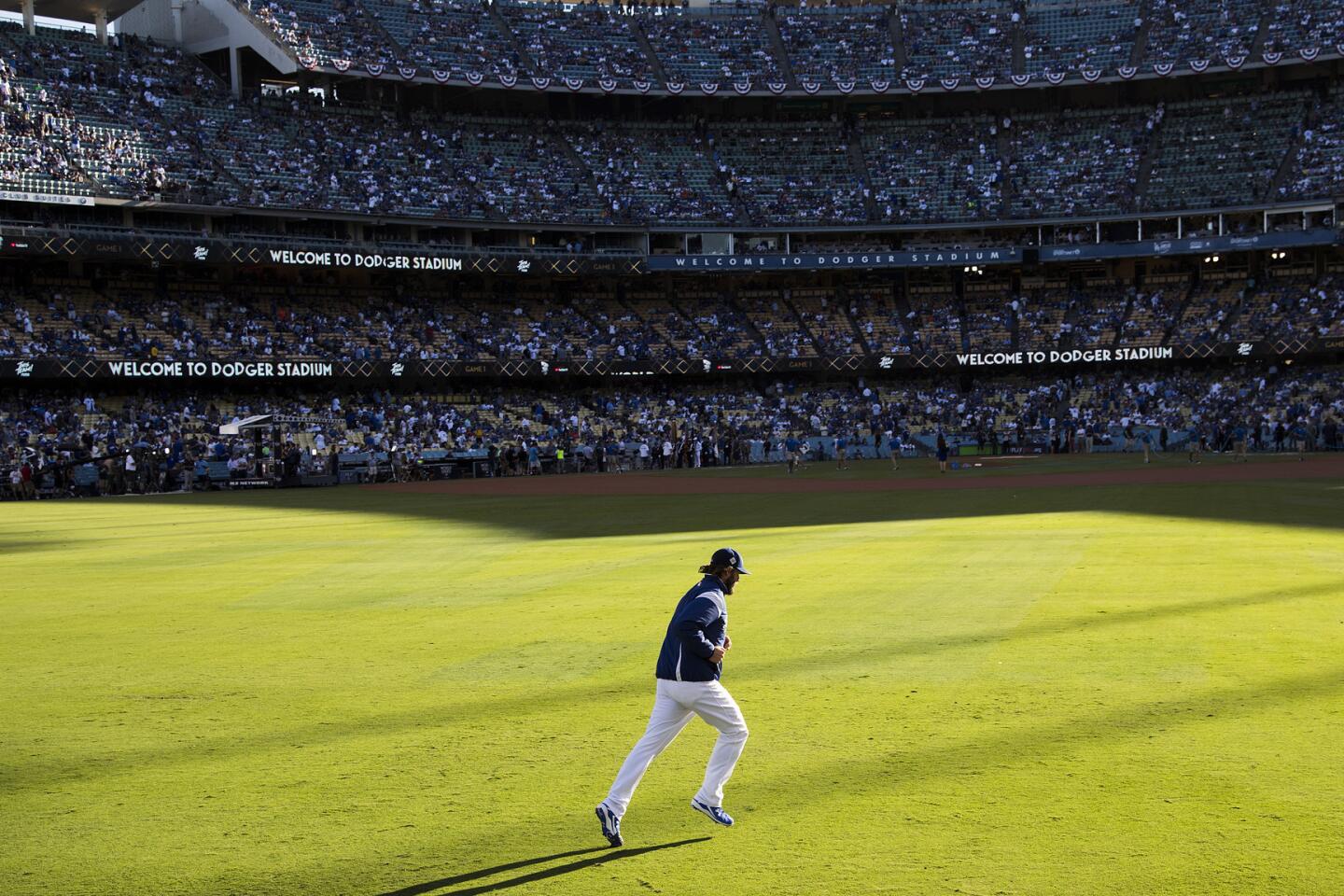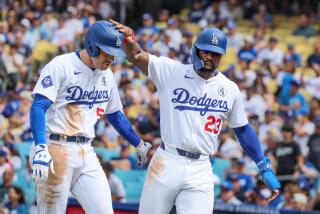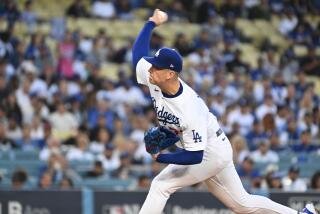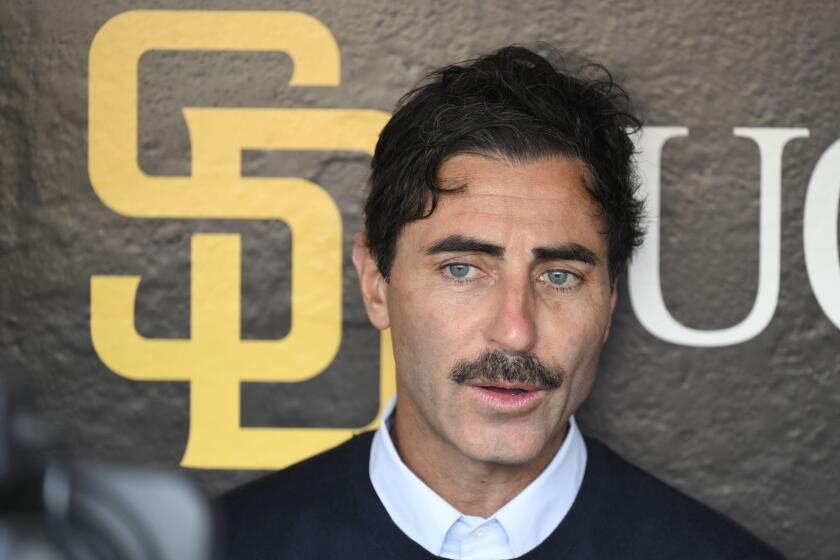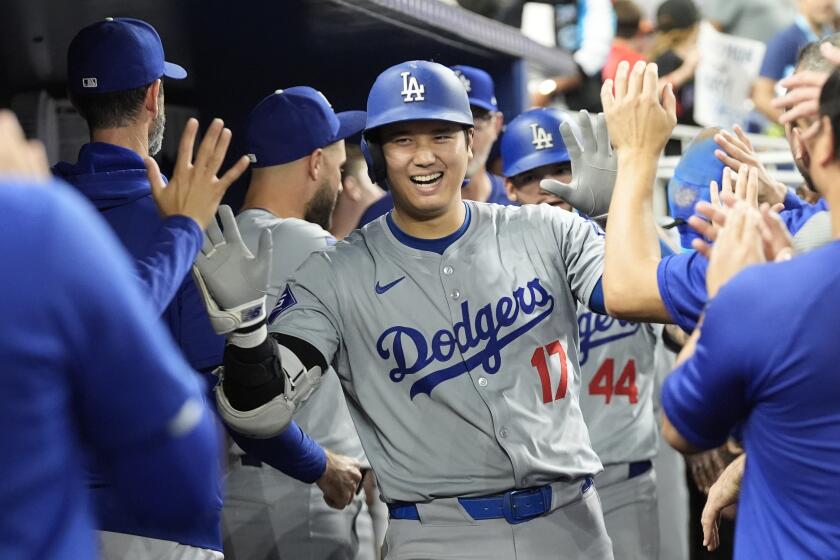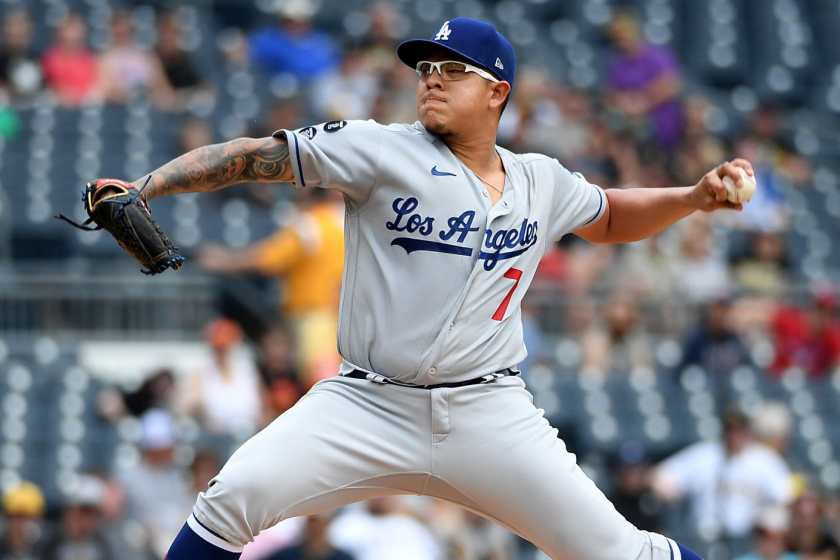Analysis: Tim Leary: You can’t get beat by a homer like Astros ace Keuchel did in Dodgers’ Game 1 win

Tim Leary had a career year in 1988, going 17-11 with a 2.91 ERA to help the Dodgers win the World Series. The No. 2 starter behind Orel Hershiser in the regular season, Leary moved to the bullpen in the World Series, allowing one run and six hits in 6 2/3 innings of two games against the Oakland Athletics.
Now 58 and living in his hometown of Santa Monica, Leary is serving as a guest analyst for the World Series with an assist from Times staff writer Mike DiGiovanna.
DiGiovanna: Justin Turner didn’t exactly crush Dallas Keuchel’s 87-mph, up-and-in cut fastball for his tie-breaking homer in the sixth. The ball traveled only 371 feet to left field. According to Inside Edge, it was the first “up-and-in” pitch Turner hit for a homer this season. What do you think, good pitch or a mistake?
Leary: Keuchel had already “established inside” with a 1-and-0 cutter that Turner swung through and missed. After that, he should have just stayed away, away, away and preferably low, as a left-handed hitter [Cody Bellinger] was on deck.
Not that Bellinger is a bad hitter, but he’s going left on left, against Keuchel, and he did look bad in the at-bat after the homer, striking out on a sweeping breaking ball.
Keuchel made a nice pitch to get to 1-2 on Turner, a low-and-away. In the year of the homer, there was no reason to take a chance on an inside mistake. He needed it down and in. Near the dirt.
There’s a saying in baseball, especially late in the game and against the top four hitters, that you don’t want to give up a go-ahead homer to the pull side. Make him hit it the other way. You’re better off just staying away. So the big mistake was the pitch and location selection.
The first pitch of the game by Keuchel was clearly a mistake, a center-cut, 88-mph fastball that Chris Taylor obliterated, sending it 447 feet to the back of the left-field pavilion. Did Keuchel think he could start the game with a get-me-over fastball? Did Taylor’s reputation as a patient hitter affect Keuchel’s approach?
He probably wanted to throw a knee-high fastball, outer half, and he missed middle-middle. I know Taylor has great plate discipline, but you’ve got to figure as a pitcher that every guy is a first-ball hitter to some extent.
Taylor has been hot. I doubt Keuchel was trying to throw it right down the middle. He just made a mistake. But having experience teaches the good pitchers to just move on to the next hitter, and that’s what Keuchel did. The psychology is to “throw it out,” as my former coach at UCLA, Gary Adams, would say.
The Astros had the fewest strikeouts in the major leagues this season. They struck out 12 times in Game 1, 11 times against Clayton Kershaw. How was the Dodgers ace able to stymie the Astros?
I charted every single pitch. Kershaw had not just his regular three pitches — fastball, slider and curve — all working, he also mixed in some changeups. He struck out George Springer on a 3-2 changeup in the sixth. You walk him there, all of a sudden you’re looking at the 2-3-4 hitters coming up.
So, some clutch pitching, a lot of strikes, a lot of close pitches. He was really on, hitting the corners.The Astros took too many strikes and chased too many pitches out of the zone.
Springer, Yuli Gurriel, Jose Altuve, Carlos Correa, Marwin Gonzalez, they’re very aggressive hitters. They’re up there to swing more than take, clearly, but how often do they face an ace of aces like this?
Your average No. 2, 3 or 4 starter is gonna give you pitches to hit and make some mistakes. This guy is gonna go down as one of the greatest pitchers of all time, even if he never pitches another game. So it was a masterpiece. For a guy who hasn’t had a great track record in the postseason, he threw an A-plus game.
Did winning Game 1 have added significance considering the Dodgers have to face Justin Verlander, who was untouchable in the ALCS, in Game 2?
Yes. With Verlander pitching [Wednesday], I think they really needed to win this one. Verlander has been on a roll for three months.
Facing Verlander down 0-1 is a lot more daunting than up 1-0, because you’re gonna face him another time in this series, and if he’s on both times, you’re looking at a possible three games you could lose. It was big for the Dodgers to get the first win.
Corey Seager missed the NLCS because of a lower-back injury and hadn’t played in two weeks. What were your impressions of the Dodgers shortstop in Game 1?
He did what you’re supposed to do when you haven’t played a lot lately — he stayed within himself, and that’s good, because he’s been known to over-swing at times, and you’re not gonna get hits off a lefty like Keuchel if you overswing.
His first at-bat, he hit into a double play, but then he got a jam-shot single on the first pitch of his second at-bat and worked the count and got a nice line drive for a hit in his third at-bat.
He made the plays on defense, though he did bobble that double-play grounder by Gurriel in the seventh. But they got the out at second base. As long as you get the first out, it’s not completely horrible.
The Dodgers had six hits and grounded into three double plays. Should Dodgers fans be concerned about the offense?
No … they were facing top-notch pitching, too, and these games are most likely going to be won or lost in fairly low-scoring fashion. It’s the best pitching in both leagues, the teams with the most wins in each league … if there’s more than one blowout in this series, I’ll be really surprised.
The Los Angeles Dodgers in the 2017 World Series
Follow Mike DiGiovanna on Twitter @MikeDiGiovanna
More to Read
Are you a true-blue fan?
Get our Dodgers Dugout newsletter for insights, news and much more.
You may occasionally receive promotional content from the Los Angeles Times.

